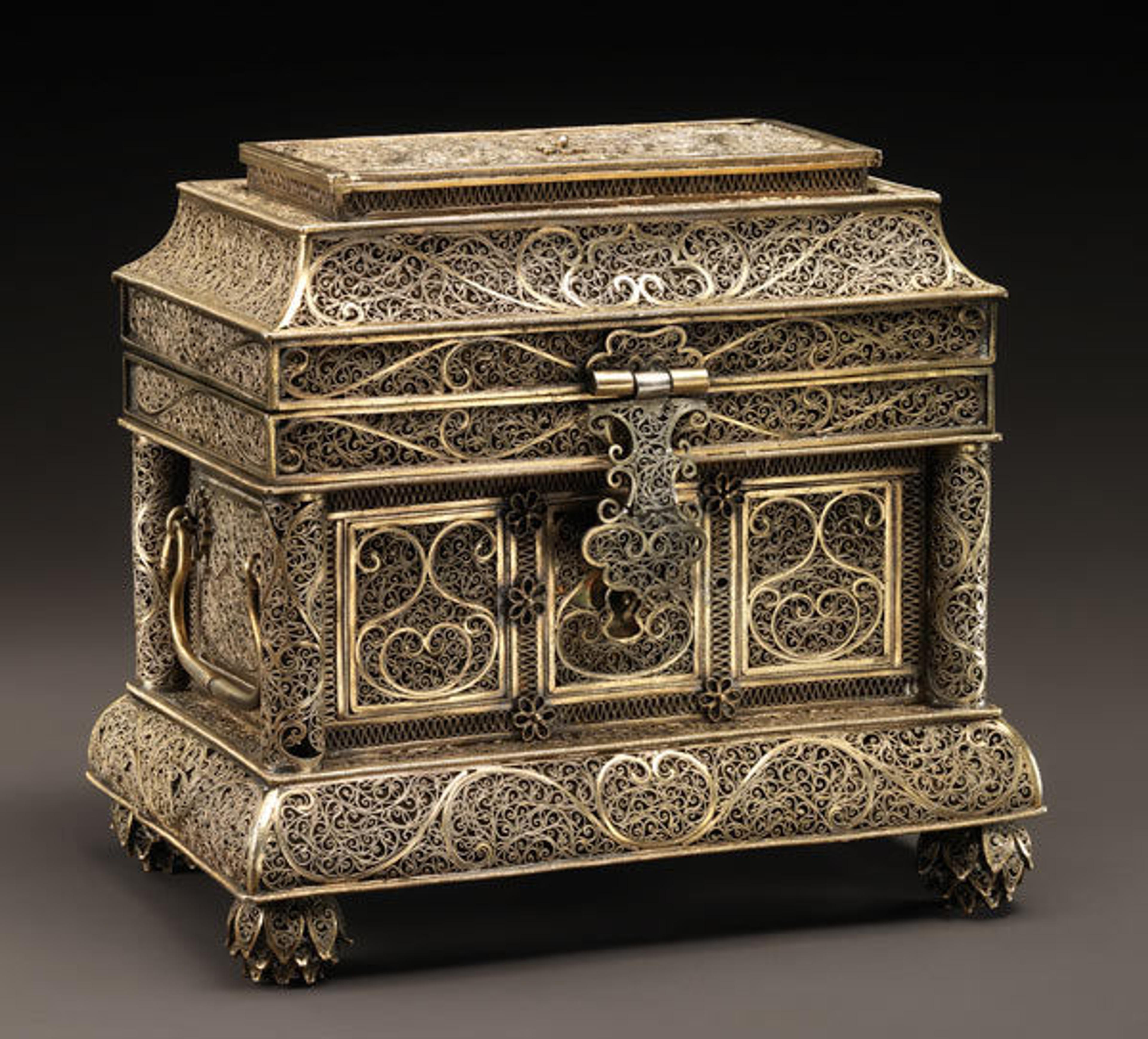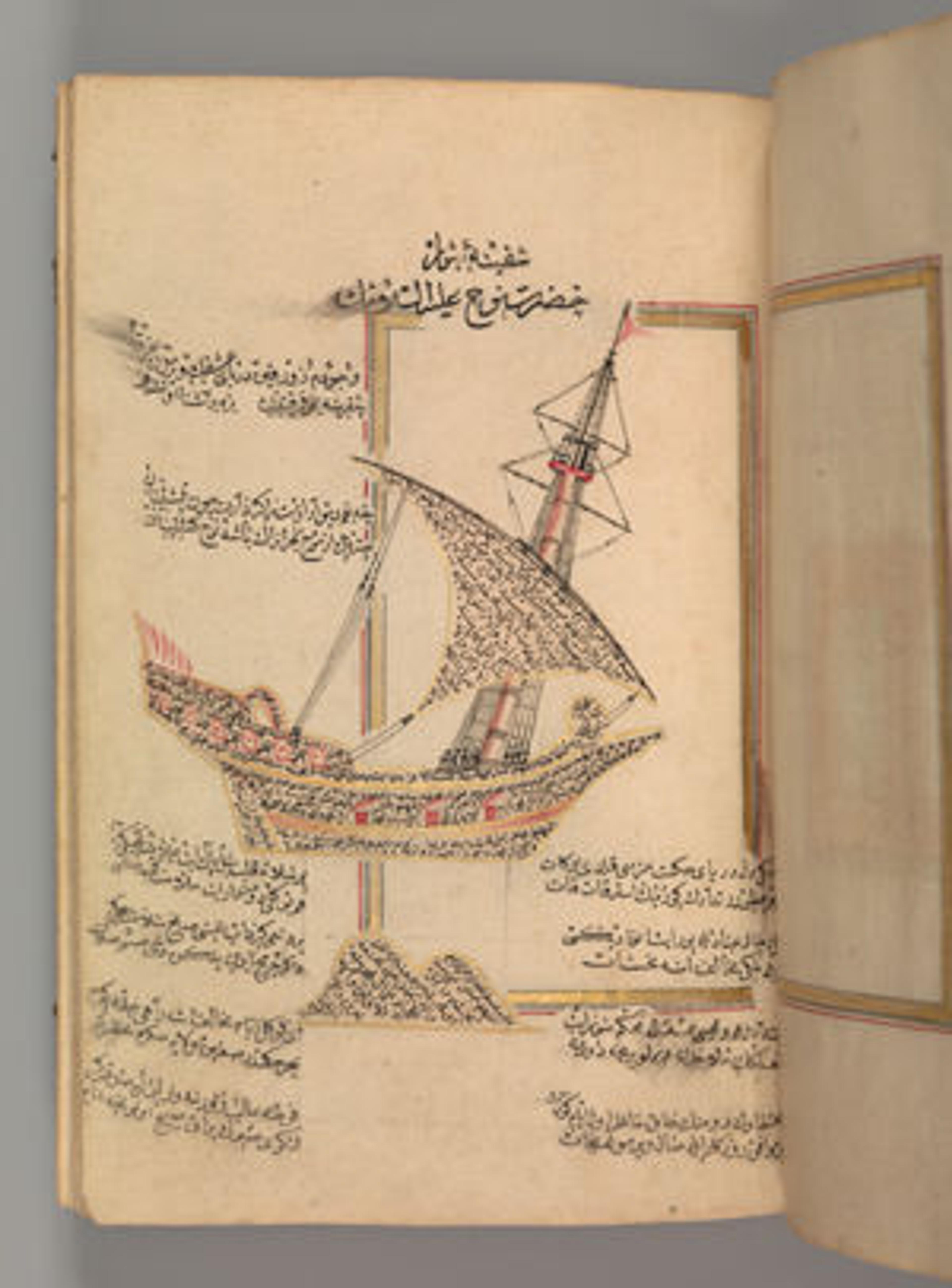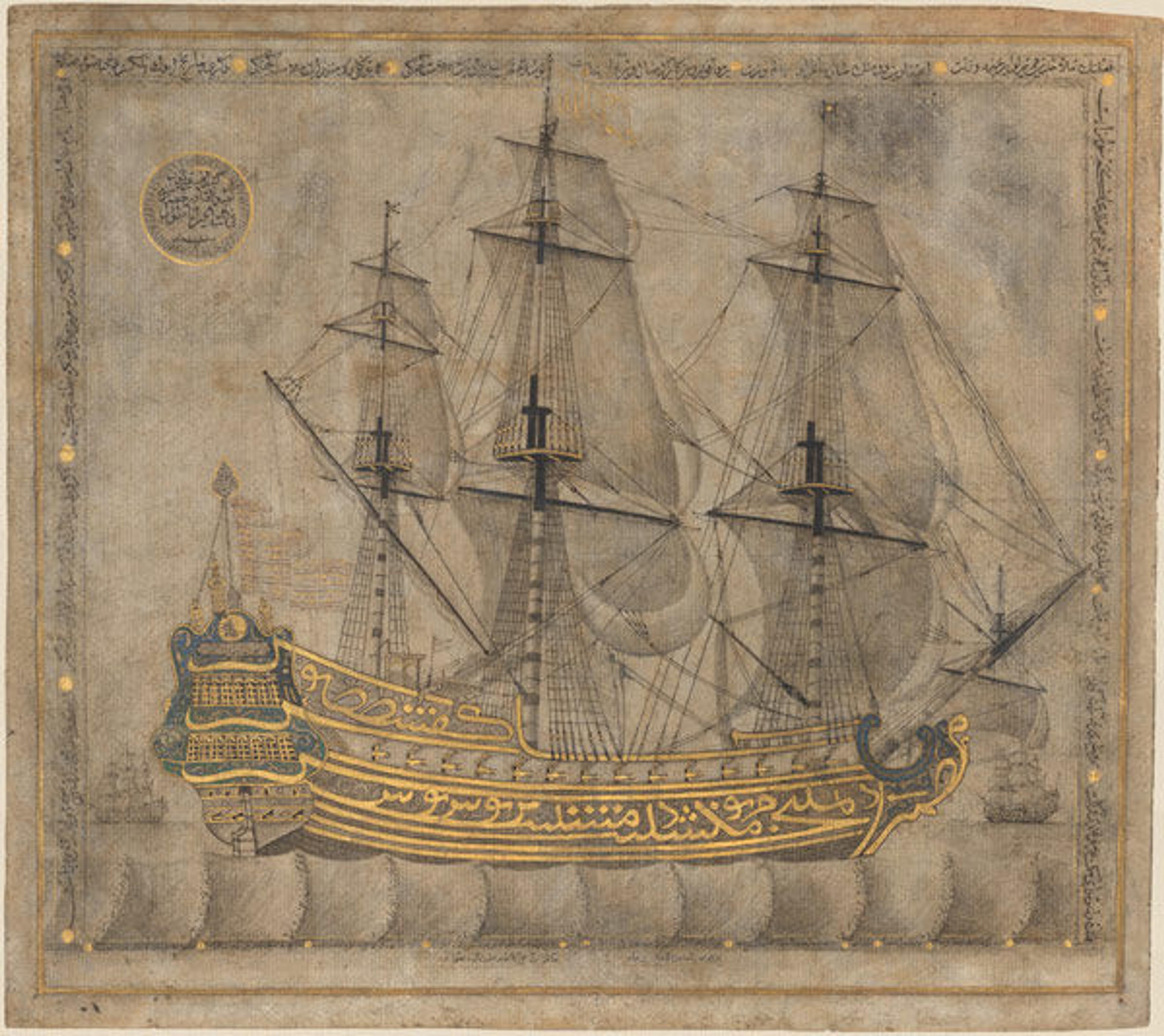Taking Stock of the Department of Islamic Art's 2014 Acquisitions
This contemporary work, acquired in 2014, refers to the structure of brick cupolas, including those of the Great Mosque of Isfahan, and its concentric composition alludes to Sufi practices. Kami Y. Z. (American, b. 1956). Endless Prayers XXVIII,(detail) 2009. Mixed media on paper; 45 x 33 x 1 1/2 in. (114.3 x 83.8 x 3.8 cm). The Metropolitan Museum of Art, New York, Purchase, 2012 NoRuz at the Met Benefit, 2012 (2014.62)
«One of my regular tasks as a research assistant is to enter information about new acquisitions into the collections management database of the Department of Islamic Art. Slower-paced than some of my other responsibilities, it gives me an opportunity to study the works that the department has obtained in the past year. And during the holidays, when our offices were a bit quieter, I had the chance to really take a look at our latest acquisitions.»
The Department of Islamic Art only began collecting contemporary works of art a few years ago, but these pieces, such as our recently acquired Endless Prayers XXVIII (pictured above), add to the richness of our collections—they are connected to and relate to our existing, older works. Although they are not displayed permanently in our galleries, some will appear in upcoming special exhibitions, including in Bazm and Razm: Feast and Fight in Persian Art, which opens in February.
As reflected in the name of our installation, the Galleries for the Art of the Arab Lands, Turkey, Iran, Central Asia, and Later South Asia, the department feels it is important to acknowledge both the diversity and the shared history of the objects in our collection. And, as my colleague Fatima pointed out in a recent blog post, not all of these objects were produced by Muslim artists or artisans, and many are secular in nature. The diversity of our 2014 acquisitions adds to the existing breadth and variety of the department's collection, which includes works from around the world, from India to Spain (and some by diasporic artists living in the United States), and dating from the start of Islam in the seventh century to the present day.

This seventeenth-century box from Goa, in India, incorporates a filigree technique that was popular in Portugal at the time. Goanese filigree box, 17th century. India. Silver filigree, parcel-gilt; 5 1/8 x 5 1/8 x 3 3/4 in (13 x 13 x 9 cm). The Metropolitan Museum of Art, New York, Purchase, Friends of Islamic Art Gifts, Elizabeth S. Ettinghausen Gift, in memory of Richard Ettinghausen, and Ralph D. Minasian, and The Irene Diamond Fund Inc. Gifts, 2014 (2014.253).

A maquette for Fallujah 2004, a large-scale sculpture by Siah Armajani at the Walker Art Center in Minneapolis, serves as a reminder of the houses and lives that were destroyed during the Second Battle of Fallujah in November 2004. The work references Picasso's Guernica, as well as the hit 1950s song "Johnny B. Goode" by Chuck Berry. Siah Armajani (Iranian, b. 1939). Fallujah 2004, 2004. Wood, paint, plexiglass, cloth, metal and copper wire; 16 1/2 x 10 11 3/4 in. (41.9 x 25.4 x 29.8 cm). The Metropolitan Museum of Art, New York,Anonymous Gift, 2014 (2014.538)

There are also other considerations that play a role in acquisition decisions. Curators look for objects that fill gaps in the collection, relate to other pieces on display, or help to tell a story about a particular moment in history. For example, one of the department's four prayer books is an Ottoman prayer book or du'anama (pictured at left), and it includes drawings of the Ka'ba, the footprint of the Prophet Muhammad, and Noah's Ark. Its calligrapher, 'Abd al-Qadir Hisari, is also represented in another work in the collection, a calligraphic drawing of a galleon (sailing ship), which is pictured below. This prayer book might make its way into the Ottoman galleries (459 or 460), or, eventually, into a special exhibition. By enriching the collection, curators build a group of objects from which they can continue to conduct research and plan future exhibitions
We look forward to seeing these new acquisitions on display in 2015 and beyond!
Left: Prayer book, A.H.1180/A.D.1766. Turkey. Calligrapher: 'Abd al-Qadir Hisari. Manuscript: ink, opaque watercolor, and gold on paper; Binding: leather and gold; 6 x 4 in. (15.25 x 10.16 cm). The Metropolitan Museum of Art, New York, Purchase, Friends of Islamic Art Gifts, 2014 (2014.44)

This calligraphic drawing, acquired in 2003, was penned by the same calligrapher as the prayer book pictured above (acquired in 2014). Calligraphic Galleon, A.H. 1180/A.D.1766–67. Turkey. Calligrapher: 'Abd al-Qadir Hisari. Ink and gold on paper; 19 x 17 in. (48.3 x 43.2 cm). The Metropolitan Museum of Art, New York, Louis E. and Theresa S. Seley Purchase Fund for Islamic Art and Rogers Fund, 2003 (2003.241)
Julia Cohen
Julia Cohen is a research assistant in the Department of Islamic Art.